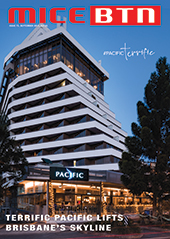Travel offers 'need to reflect new consumer preferences'
- BTN News
- Wednesday, 12 June 2024
New consumer preferences and habits have emerged in the first half of 2024 in an Asia Pacific tourism sector which is recovering from the pandemic years in an uneven manner.
The post-Covid tourism surge from 2022 was initially powered by more affluent tourists seeking relaxation amid nature, user convenience, sustainable and authentic local tourism experiences, all enabled by heightened digitisation of travel.
Those trends have since evolved. Travel executives speaking at the Pacific Asia Travel Association’s 'Navigating the Path to Tourism Recovery' webinar this month said that mega-trends such as value for money, seamless booking and payments, and travel that aligns more to consumer values are now the hallmarks of post-pandemic tourism in the region.
Caroline Bremner, senior head of travel research at Euromonitor International, said destinations that deliver safety, relaxation, value, good quality food and drink and access to natural attractions would continue to do well.
She noted that younger (Gen Z) travellers, much preferred personalised, authentic local experiences, with price not so much of a consideration, relative to much older baby boomers who seek value.
Free cancellations, easy digital payments, reliable user reviews, free upgrades and personalised recommendations (especially from family or friends), turn lookers into bookers, said Bremner.
However, tourism executives addressing the webinar said that Chinese outbound tourism was still lagging, dampening tourism performance in destinations across Asia Pacific. Indeed, China’s neighbouring destinations such as Japan, Korea, Hong Kong, Vietnam and Macau may not fully recover until the end of 2026 due to Chinese travellers opting to stay home or travel domestically instead of abroad.
Destinations such as India and Thailand which have all-but recovered – or in Singapore’s case exceeded – their high point 2019 tourism arrival levels did so by attracting tourists from markets such as Australia, Europe and USA to compensate for stay-away Chinese and Japanese.
China as a destination has its challenges too. doctor Anyu Liu of Hong Kong Polytechnic University revealed that international tourist arrivals into China are currently only around 80 per cent of 2019 levels, and may only return to around 96 per cent by the end of 2026. Liu said that inflation, labour supply challenges and regional conflicts were dampening recovery.
Addressing the issues raised by the webinar around the Asia Pacific region as a whole, Noor Ahmad Hamid, ceo of PATA, said that tourism in Asia Pacific could be enhanced by air capacity improvements, better land-based regional connectivity, improved training to attract and retain skilled personnel, and an easing of visa restrictions.
Looking at a quickly-arriving travel tech future, the webinar speakers said that AI was a big concern as it could be manipulated to perpetuate bias and misinformation, especially in travel marketing. AI needs to be used responsibly and carefully as a travel enabler, said Bremner.










